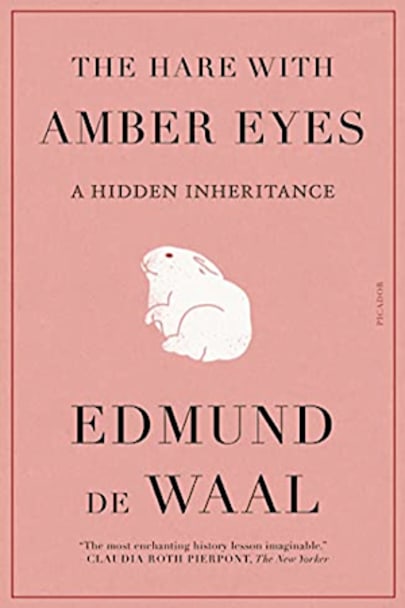The Ephrussis were a grand banking family, as rich and respected as the Rothschilds, who “burned like a comet” in nineteenth-century Paris and Vienna society. Yet by the end of World War II, almost the only thing remaining of their vast empire was a collection of 264 wood and ivory carvings, none of them larger than a matchbox.The renowned ceramicist Edmund de Waal became the fifth generation to … fifth generation to inherit this small and exquisite collection of netsuke. Entranced by their beauty and mystery, he determined to trace the story of his family through the story of the collection.
The netsuke drunken monks, almost-ripe plums, snarling tigers were gathered by Charles Ephrussi at the height of the Parisian rage for all things Japanese. Charles had shunned the place set aside for him in the family business to make a study of art, and of beautiful living. An early supporter of the Impressionists, he appears, oddly formal in a top hat, in Renoir’s Luncheon of the Boating Party. Marcel Proust studied Charles closely enough to use him as a model for the aesthete and lover Swann in Remembrance of Things Past.
Charles gave the carvings as a wedding gift to his cousin Viktor in Vienna; his children were allowed to play with one netsuke each while they watched their mother, the Baroness Emmy, dress for ball after ball. Her older daughter grew up to disdain fashionable society. Longing to write, she struck up a correspondence with Rilke, who encouraged her in her poetry.
The Anschluss changed their world beyond recognition. Ephrussi and his cosmopolitan family were imprisoned or scattered, and Hitler’s theorist on the “Jewish question” appropriated their magnificent palace on the Ringstrasse. A library of priceless books and a collection of Old Master paintings were confiscated by the Nazis. But the netsuke were smuggled away by a loyal maid, Anna, and hidden in her straw mattress. Years after the war, she would find a way to return them to the family she’d served even in their exile.
In The Hare with Amber Eyes, Edmund de Waal unfolds the story of a remarkable family and a tumultuous century. Sweeping yet intimate, it is a highly original meditation on art, history, and family, as elegant and precise as the netsuke themselves.
”more



What a wonderful insight into a family’s history. All of us have “family treasures” that carry the history of events whether we know that history or not.
I didn’t know that some who made pots could be so sensitive and evocative.
This is a wonderful book about survival and art . It was very interesting and informative without being academic I learned so much . Such personal bits of history that I bought the delux edition for myself. It will interest art students as well as historians . It is multigenerational written by an artist ho has had shows in England and New York …
It was an inspirational story of a family trapped in Vienna with the cloud of the German occupation over them but dealt with as a side issue but ever present.
Stopped in Vienna while on a cruise and searched together with another passenger who had been as enthralled with the book as I was. We searched in vain for the family mansion, ever present …
Beautiful history about an heritage coming from the past
Upon the death of his great-uncle, Edmund de Waal inherits a collection of very old, very small Japanese netsuke (including a hare with amber eyes). de Waal knows that the collection was first purchased by a distant forebear living in Paris in the mid-nineteeth century, and made their way to his branch of the family tree as a wedding present to …